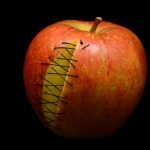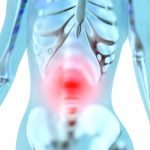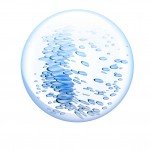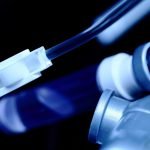The Patient-Physician Connection
Robert Van Horlick, ND
While volumes have been written on the subject of cancer, I hope my perspective and experience can add to others’ perspectives, and perhaps this will increase the effectiveness of treatments that will help those in need.
With that in mind, I will explore the underlying causes of cancer. As an ND, I try to keep in mind what the body needs to do to remain in balance. I believe the causes of cancer are complex and multifactorial, and when the body can no longer compromise, the checks and balances are no longer in place and chronic, degenerative diseases like cancer develop. When the immune system loses its effectiveness, it is a recipe for disaster.
Inflammation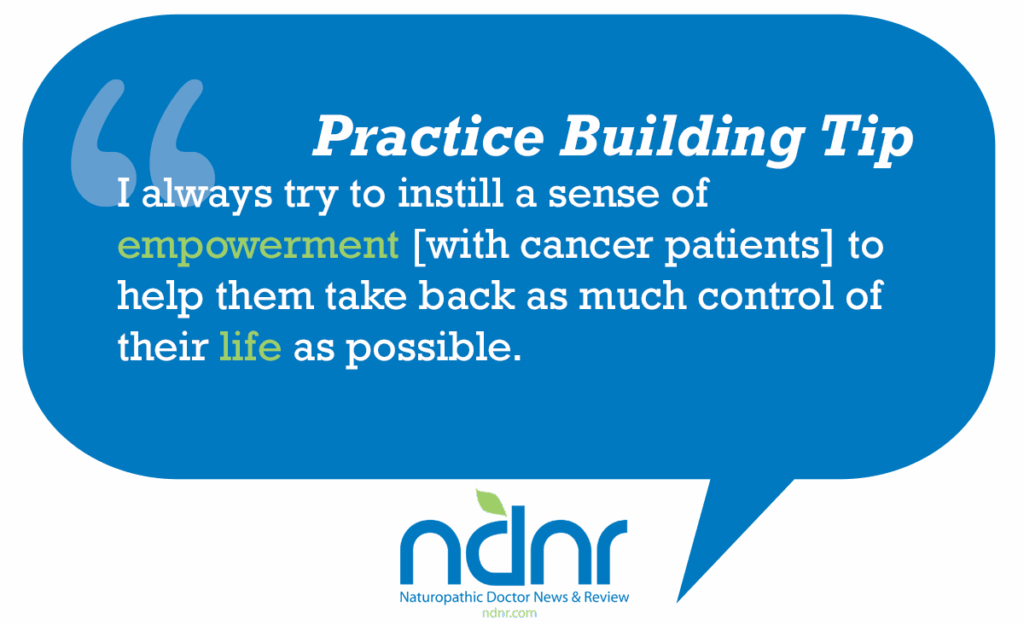
One major contributing factor in the development of cancer seems to be an underlying inflammation. This leads to cellular damage, which affects the chromosomal DNA and cellular repair or replication.
Examples of chronic inflammation that can lead to certain cancers include:
- Liver inflammation from hepatitis B and C
- Cervical inflammation from HPV
- Inflammation from helicobacter pylori
- Pancreatitis
- Irritation of the lungs from smoking
- Irritation of the mouth due to chewing tobacco
- Inflammation from allergies, which may cause lymphomas, celiac disease, etc.
Chronic inflammation leads to oxidative stress which, in turn, leads to problems with the structural integrity of cellular replication. Substances such as advanced glycation end products (AGE) and free radicals affect our immune system, which sets the stage for cancer and other chronic degenerative diseases.
Other causes of cancer include various exposures to mutagenic toxins, pesticides, herbicides, industrial/environmental pollutants, parasites, heavy metals and even certain electromagnetic fields.
When our immune system is overwhelmed by this “toxic burden” along with other factors, such as those that are mentioned next, it affects our lives mentally, emotionally and physically. It is no wonder our major defense system gets compromised and can no longer protect us:
- Diet: artificial colors and dyes, coffee, nitrates, nutrient-deficient foods
- Environment: pollutants, exposure to extreme temperature changes, physical stress, radiation, electromagnetic fields
- Psychological stress: emotional trauma, anxiety, excessive anger or fear
- Lifestyles: drug/alcohol problems, type A personality, workaholism, insomnia, unhealthy choices in day-to-day living.
No wonder cancer continues to grow, and younger and younger people are developing this terrible disease.
Acid/Base Balance
We have to look at what keeps our body in proper homeostasis. Acid/base balance is critical, and our system works constantly to keep this balance. Our physiology has different buffer systems – bicarbonate, phosphoric acid, hydrochloric acid, the use of amino acids, calcium, etc. – all of which contribute to this balance. Our organ systems all contribute to this acid/base balance as well.
This balance is so important that, given an imbalance, our bodies will crave certain foods that are sweet, sour, bitter or salty. The body usually knows what it needs, but only when it has been detoxified and at a normal homeostasis. Otherwise, we can crave those things that are not necessarily healthy, like chocolate, nicotine and alcohol.
If a body becomes too alkaline, it can set up conditions that favor yeast and viruses; if too acidic, bacteria seem to thrive. The immune system is affected either way: It seems if the body is too alkaline it affects T cells in a negative way; if it is too acidic, the B cells are not as effective. Even the enzyme systems are affected by this acid/base balance.
This is easy to monitor, however. Get patients to perform a first-morning urine test. The pH range should be between six and seven. In my experience, patients often are too acidic. Patients’ acid/base balance will play a role in how well they do with any treatment program.
Detoxification
A CDSA shows what the intestinal environment looks like. This is especially important with colon cancers, but important in overall evaluation as well.
Another contributing factor that puts stress on the system is free radicals, which can result from both endogenous and exogenous sources, such as normal metabolic processes, environmental toxins, heavy metals and pesticides. The real danger arises when the body cannot quench the free radicals, which then causes more oxidative stress and further compromises the immune response.
When the body’s primary immune response is suppressed, both the B and T cells’ jobs are compromised, the free radicals go unchecked and tissue/organ damage can result. This is where cellular damage leads to chronic inflammation, which sets the stage for abnormal cell development. When the toxic burden becomes too much and the normal detoxification pathways are not able to keep up, the entire system is compromised.
When focusing on detoxification, I think first of the liver and bowels. With the liver, the main detox pathway is the cytochrome P450 system, with glutathione transferases, amine oxidases, reductases and so forth.
Briefly: When xenobiotics enter the liver, Phase I is activated. The toxins are made water-soluble to allow excretion by the kidneys. This is a critical step that helps to eliminate many metabolic intermediates; however, many free radicals are formed by this process.
If there is a deficiency of antioxidants, the intermediates can be more toxic than the original substance. An example of this is acetaldehyde formed from the metabolism of alcohol. Phase I deals with a lot of environmental toxins like pesticides, herbicides and certain drugs, and can be easily overwhelmed if the toxic exposure is high. This is one reason patients can get so ill with chemotherapy treatments.
Phase II, also known as the conjugation pathway, helps eliminate the intermediates from Phase I. If Phase II gets overloaded, Phase I gets backed up and the intermediates are released in the system, again causing further damage and increasing the toxin burden of the organ and the body as a whole.
Phase II uses especially the sulfhydryl groups to help eliminate toxins. Certain amino acids like glycine, cysteine, glutamine and selenium, which are used to produce glutathione, are important during this process. The liver has an enormous task, especially with the compromised patient who is undergoing chemotherapy or radiation.
When considering detoxification, the biological terrain or cellular matrix needs a lot of attention. This is an area where naturopathic medicine has a lot to offer patients in their quest for good health. The biological terrain offers an insight to the health (or lack of) in the body and can be assessed in various ways. Standard diagnostic tests, such as blood workups, lab tests, ultrasound and x-rays, offer some insight to the terrain. I also use energetic testing, such as an EDS system. In acupuncture, pulse diagnosis can also aid in this evaluation. It is important that the matrix is evaluated.
To remember that all disease starts on a cellular level is one of the secrets to a successful outcome. Lymph vessels and immune cells are where we must focus our attention. Detoxification not only helps this matrix eliminate the toxins, but it also is crucial in the transport of nutrients to and from cells.
Cellular communication occurs through the matrix, and is responsible for the response that takes place almost instantly. This response is for cellular repair, immune response to invading toxins and so forth. If there is an overburden of toxins, this communication can be disrupted, delayed or stopped, resulting in cell death and disease.
While circulation is important for many reasons, it seems that little is mentioned about the lymph fluid and its vessels. The secret life of the lymph system goes largely unnoticed due to its subtle nature. It is really a major player in the life of the cellular matrix. The lymph is a major detoxification route that allows the body to remove the toxic burden from the cells as well as the extracellular space. The WBCs that live in the lymph system are a crucial part of our surveillance system. When antigens or toxins encounter these WBCs, they become sensitized and start cloning themselves to fight invaders.
This system is responsible for much of the extracellular drainage, which is put into general circulation through the superior vena cava for further detoxification. Many factors affect this system’s performance, such as cardiovascular disease, lack of exercise, decreased osmotic pull from macromolecules, chronic overloading of toxins and physical damage from trauma like accidents, surgery and radiation.
The other major players, such as bowels, kidneys, respiratory system and skin, will not be discussed in this article.
Connecting With a Patient
The first (and perhaps one of the most important) thing to do with a new patient is to make contact – make a connection. Patients can feel whether the physician really is present and there for them. My experience has been that most patients with cancer are not really seen nor heard: Their world usually includes a lot of suppressed emotion due to their fear, which is not addressed by most conventional care providers.
Many patients try to be brave for their families and friends. This further cuts them off from their real feelings, and adds to the sense of having no control. As doctors, we need to become a part of the patient’s support system. I talk to my patients about this and help give them tools to deal with this issue.
Helping patients establish boundaries and become present for themselves is a big part of their healing process. As NDs, we are part of this journey, but it is their journey. Being present for someone who is going through this process is very powerful.
I take a detailed history and let patients know up front what I can offer them. I explain to them what naturopathic medicine is and discuss with them most topics in this article. I discuss with them their options, which include getting chemotherapy or not. I always try to instill a sense of empowerment to help them take back as much control of their life as possible.
GI System
I always keep in mind what I can do to help the body heal itself and to evoke the healing power of nature. I remind myself of what I have learned from my teachers, reading about Dr. Lust, Dr. Lindlahr and others, such as: “Clean up the gut and get the bowels working, and the patient will do better.”
The intestine is a prominent part of the immune system, and is in direct contact with the matrix. The changes in pH are necessary for absorption, chelation of certain minerals, retardation of yeast or certain bacteria, and promotion of proper gut ecology. This gut ecology is very important to the health of the whole person, and needs to be part of any health program.
To help with this, I use probiotics. It is important to use a strain that will colonize, as many probiotics do not colonize in the intestinal tract. A colonizing strain produces the “Velcro effect,” meaning that it will adhere and start setting up colonies. Whichever probiotic is used, make sure that it is viable and has some research behind it.
I also consider the brush border enzymes, as they help to keep a healthy environment. Remember, proper pH is also very important for enzymatic function. This is true for the GI tract as well as the whole body. I always try to get the biological terrain to open, and enhance elimination before starting a major detoxification.
I believe that a lot of so-called “healing crises” are really further toxicity that the body was not capable of handling because the eliminative systems were blocked. This is especially true of patients who have undergone drug therapy like chemotherapy, or patients who have been ill for years. A word to the wise “The sicker the patient, the more caution needs to be used when treating and detoxifying this type of patient”.
So how can we detoxify the patient with a high toxic burden? One modality is hydrotherapy, especially constitutional hydrotherapy. This is a great way to help detox the cellular matrix. Hydrotherapy will improve lymphatic flow, increase WBC activity, increase vitality and add the human touch.
I also look at skeletal muscle health, as most patients hold stress in their bodies, which can manifest as tension and pain. These holding patterns rob the body of energy and contribute to decreased circulation which, in turn, further restricts the exercise a patient can perform.
Simple manipulation, trigger point work and massage all can help with the detoxification process (again adding the human touch). Simple exercises like walking, swimming, stretching, yoga or tai chi will assist in patients’ well-being. Exercise always helps to increase circulation, increase oxygenation, stimulate lymphatic flow and promote detoxification.
Diet
I test all patients for food allergies, because food allergies/sensitivities put a continuous stress on the immune system, as well as cause problems with digestion, such as constipation/diarrhea, absorption and elimination and affect the pH of the GI tract. Lists of alkaline foods and food combining are available through various books on nutrition.
I ask patients to avoid red meats, and recommend range-fed chicken, wild fish and turkey if they want to eat meat. I recommend as much organic fruit and vegetables as possible, and the elimination of all processed foods as well as coffee, chocolate, soft drinks, most dairy products and all highly refined sugar products. I encourage 1.5-2 quarts of pure spring water each day.
Breathing
Such a simple act as breathing can have a profound effect on the health of an individual. Deep, abdominal breathing activates the parasympathetic nervous system. Breathing helps restore calm and brings focus to the mind. It also is the fastest way to bring patients to their center – to remember their spiritual place of well-being.
Encouraging patients to practice meditation or contemplation can bring a freedom from pain of the body and a renewal of energy and well-being. Depending on the spiritual orientation of the patient, I often recommend that they talk to a spiritual advisor, minister or priest to encourage that spiritual connection between themselves and God.
For some patients, I recommend psychotherapy and, in particular, integrative body psychotherapy (IBP). This particular type of psychotherapy is body oriented, and its focus is on the authentic self. It teaches about breath and body awareness, and provides tools patients can use to help balance their life.
Ultimately, the connection between myself and the patient is most important in my practice. Not everyone is going to survive physically, but I try to help make a difference – help them make a connection with themselves and come to a place of acceptance and peace. In doing this, I find that most of my patients do better, and I have seen many miracles take place.
I believe as NDs we can play a major role in the healthcare system of the 21st century. If we keep true to the time-honored principles of naturopathic medicine, we will continue to take our rightful place as physicians and help those who seek us out. We are the experts on cellular detox, on treating the body as a whole and on understanding the connection of body, mind and spirit.
Commonly Used Therapies
Everyone has various components they use and are comfortable with; these are some of my favorite meds and nutrients.
- Selenium
- Calcium d-glucarate
- Adrenal support nutrients
- Liver support (Phase I and II nutrients)
- Medicinal mushrooms
- Coriolus versicolor
- Astragalus, Silybum marianum, Rhodiola rosea, hoxy formula
- CoQ 10
- Melatonin
- Probiotics
- Medicinal foods, like green drinks, Goat’s minerals (an extract from goat’s whey), whey protein/rice protein.
IV therapies include:
Vitamin C (up to 50g)
Hydrogen peroxide
Ozone
Glutathione.
I also like the research on Viscum album extract, which I plan to use.
Some interesting facts:
- Newborns are already contaminated with heavy metals, pesticides and herbicides like DDT, mercury and lead.
- Infertility in men is higher than ever due to abnormal sperm count.
- Some recent studies have shown even those who are vegetarian and eat only organic foods show a high toxic burden due to environmental exposure of toxins.
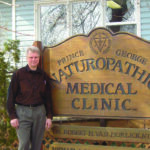 Robert Van Horlick, ND graduated from NCNM in 1988. He began his private practice in 1989, and continues to see patients at his office in Prince George, B.C. Dr. Van Horlick served on the examination board for NDs in B.C. for several years, and has served on other boards, as well, including the BCNA and the Canadian Association of Naturopathic Doctors. He is board certified in bioxidative therapy, and has taught advanced manipulation techniques at various naturopathic medical schools and conventions. He currently lives in Prince George with his wife, Reinette, and daughter, Shante.
Robert Van Horlick, ND graduated from NCNM in 1988. He began his private practice in 1989, and continues to see patients at his office in Prince George, B.C. Dr. Van Horlick served on the examination board for NDs in B.C. for several years, and has served on other boards, as well, including the BCNA and the Canadian Association of Naturopathic Doctors. He is board certified in bioxidative therapy, and has taught advanced manipulation techniques at various naturopathic medical schools and conventions. He currently lives in Prince George with his wife, Reinette, and daughter, Shante.




